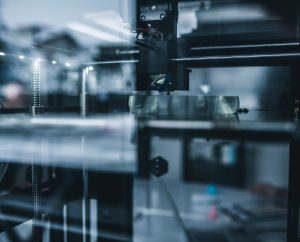To dive into the world of conceptual design is to dive into the very heart of creativity and innovation. This discipline focuses on the generation of initial ideas and concepts that will serve as the basis for the development of products, from electronic devices to furniture and much more.
At Atienza y Climent, as a company specialized in integral product development, we have prepared a complete guide about this concept so that you can understand how it works and its importance in today’s industry.

What is conceptual design?
Conceptual design represents the first flash of creativity that brings a product to life. It is the process of generating initial ideas and concepts, exploring possibilities and innovative solutions. This phase is vital in product design, as it establishes the direction and purpose of the project.
Concept modeling is one of the fundamental tools in this process, allowing ideas to be visualized and communicated in a tangible way. From the first sketch on paper to digital designs, it guides the development of the product, considering the life cycle of the project and looking for sustainable solutions.
This product design process becomes the foundation on which innovation is built, fusing creativity with functionality to form products that are aesthetically appealing and meaningful to users.
Importance of conceptual design in the design process
Conceptual design is the heart of the product development process, marking the starting point where ideas are transformed into palpable realities. In this initial phase, the foundations for the success of the project are laid, influencing every next step of the design process.
Its importance is due to these aspects:
– Disruptive innovation: it encourages the generation of revolutionary ideas that break with convention and open new frontiers in the market.
– Trend analysis: explores the latest trends and market movements to ensure that the product is aligned with current expectations.
– Differentiation: allows you to stand out in a saturated market by offering unique and attractive products to consumers.
– Concept validation: before investing resources in full development, concept design allows the feasibility and acceptance of the product in the market to be assessed.
– Personalization and customization: it creates the basis for designing products that fit the specific needs of users, offering tailor-made solutions.
For all these reasons, it is much more than an initial stage in the development process. It is the engine that drives creativity, innovation and efficiency in the design of products that are not only functional, but also impactful and attractive to users. This phase not only defines the look and function of the product, but also establishes its identity in the marketplace and its ability to stand out from the competition.
Fundamentals of conceptual design
Conceptual design is based on a number of solid fundamentals that guide the creative process and the transformation of ideas into concrete and functional solutions.
These are:
– Empathy with the user: understanding the needs, desires and behaviours of end users in order to create products that truly meet their needs.
– Study of colour and shape: the choice of the right colour and shape not only influences the aesthetics, but also the functionality and usability of the product.
– Universal design principles: aiming to create products that are accessible to everyone, regardless of their abilities or physical limitations.
– Rapid prototyping: rapid and inexpensive prototyping allows for testing ideas and concepts before investing resources in final production.
– Market and competition analysis: assessing the market and competition to identify opportunities and niches that can be exploited.
These fundamentals are the solid foundation on which successful designs are built. By understanding and applying these principles, designers can create products that are not only visually appealing, but also functional, ergonomic and adapted to the needs of the market and users.
Conceptual design process and techniques
The conceptual design process follows is structured and involves various creative techniques to transform ideas into innovative and viable solutions:
This is the process:
– Research and analysis
– Idea generation
– Selection and refinement
– Prototyping and testing
– Repetition and improvement
On the other hand, the techniques used in the design process are the following:
– Storyboarding: narrating the product’s story of use through a sequence of images to understand its interaction with users.
– Mock-ups and 3D models: creating physical or digital representations to visualize the product in scale and detail.
– Empathy maps: identify users’ emotions, needs and behaviours to design user-centric solutions.
– User experience maps: visualize user interaction with the product at all points of contact to improve the experience.
– Benchmarking: analyzing similar products in the market to identify successful features and areas for improvement.
These stages and techniques in concept design form a dynamic and creative process that drives innovation and excellence in product development. By applying these methodologies, designers can take ideas for making a project from conception to the realization of meaningful and successful products.





 by
by